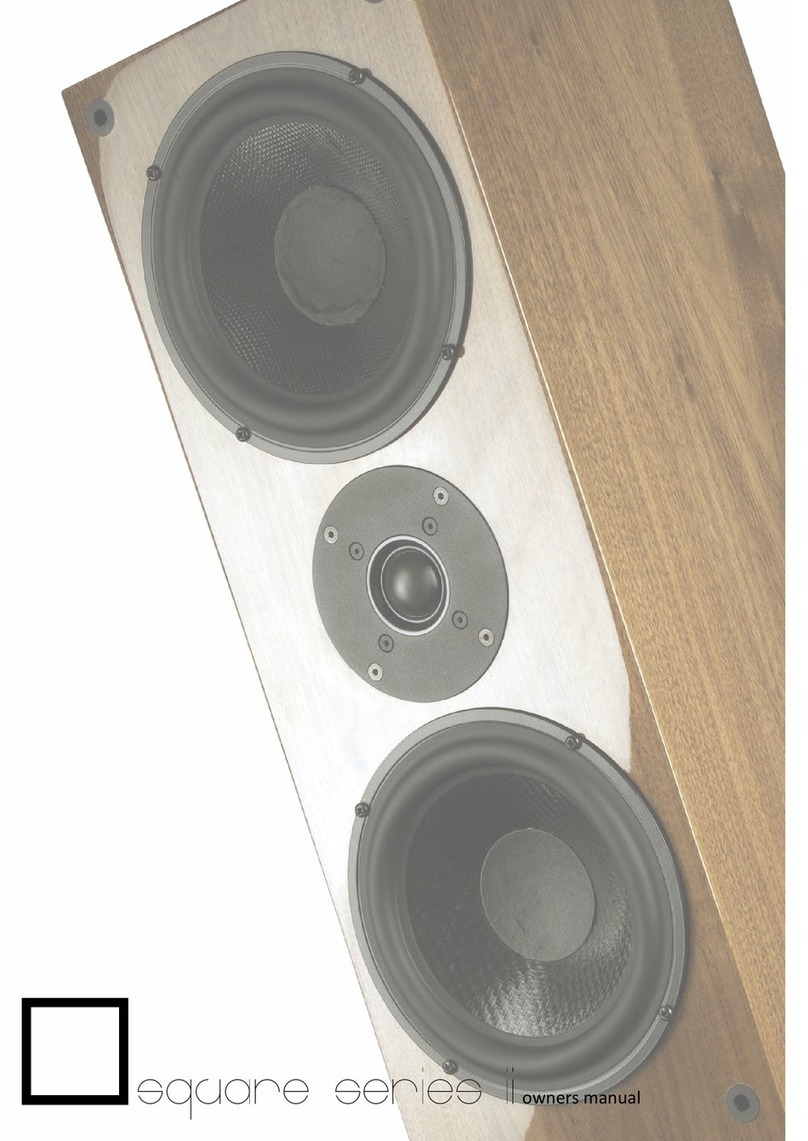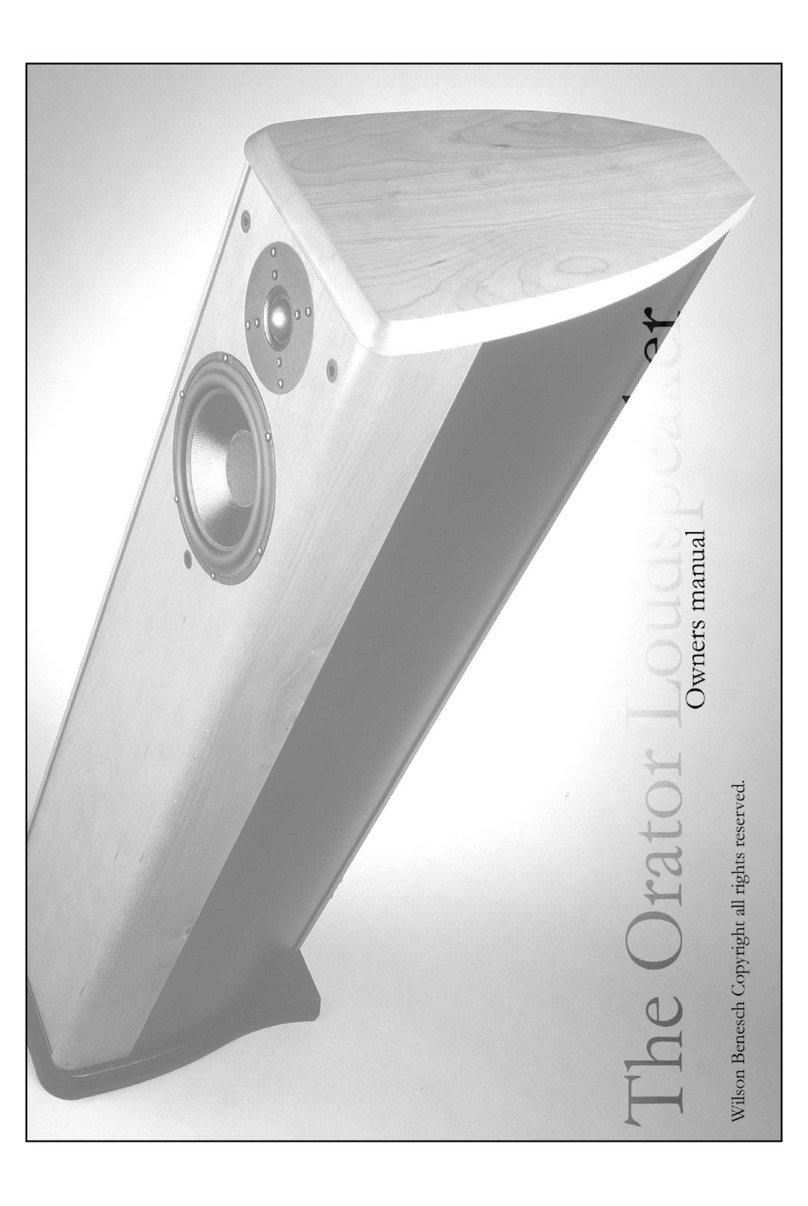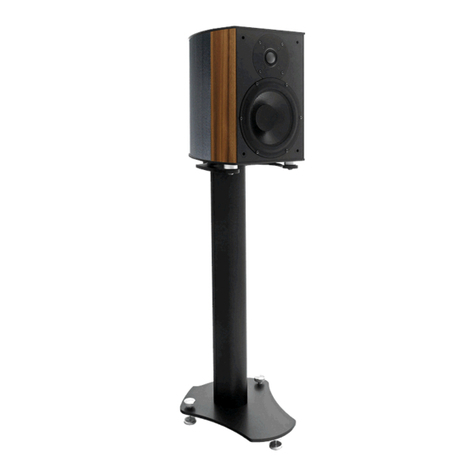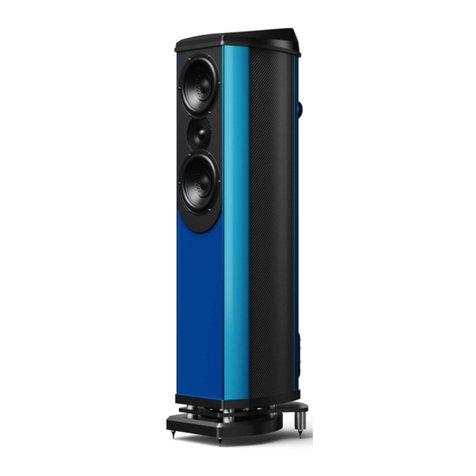
Precision Series User Manual
2.4 Loudspeaker and Listening Position
The system, comprised of different components, installed in a room with a unique acoustic character and every listener’s individual
taste, should be appreciated as a unique sum comprised of a great many variables. It should be considered that in this balancing act
experimentation is critical to getting the best from the system and more importantly, tuning to the listener’s own satisfaction. There is no
one simple set of rules for speaker placement that will t for every scenario within which a Precision Series loudspeaker is installed. It
is for this reason that no minimum or maximum parameters are stated for the positioning of each product. The listening position should
also be evaluated in the same manner.
The distance between the speakers in relation to the distance from each speaker to the listening position will impact on the size of the
sound stage presented. Additionally, if the listening position is moved closer to the speakers, the proportion of reected sound to direct
sound will decrease. A great many recommendations describe an equilateral triangle, whereby the distance between each speaker and
the listening chair are the same, but again, experimentation is the key. A larger distance between the speakers can result in a larger and
more engaging presentation. The distance between the speaker and rear and side walls should also be considered. Bass performance, in
particular, will often suffer wherever a speaker is too close to one of these boundaries, resulting in “boomy” or over-bloated bass and/
or cancellations. This effect is more pronounced still when placing the speaker into a corner where two boundaries meet.
The most valuable commodity in this process is time. Be prepared to make small changes over long periods of time. Positioning the
loudspeakers in approximate position that you anticipate will work best and then wiring the loudspeakers up and commencing the
burn-in period is advisable. During this burn-in period, the speaker will more than likely sound somewhat forward and etched, critical
appraisal of the sound at this stage should always be avoided.
Once the 120-hour running in period has elapsed, it is time to choose a rough nal position for the loudspeakers before making the nal
adjustments to toe and rake angles.
We would recommend selecting four musical passages as outlined below in helping you evaluate the various speaker positioning
parameters and the effects of changing these.
- Select one with a distinctive and easily heard human voice. Spoken voice is ideal.
- Select one passage with a full orchestra like The Pines of Rome.
- Select one that is very emotional for you.
- Select one that has a strong rhythm and a good portion of bass content, as found in a typical dance music track for example.
Precision-Series-Manual-1.0.indd 8 21/03/2019 14:37






































